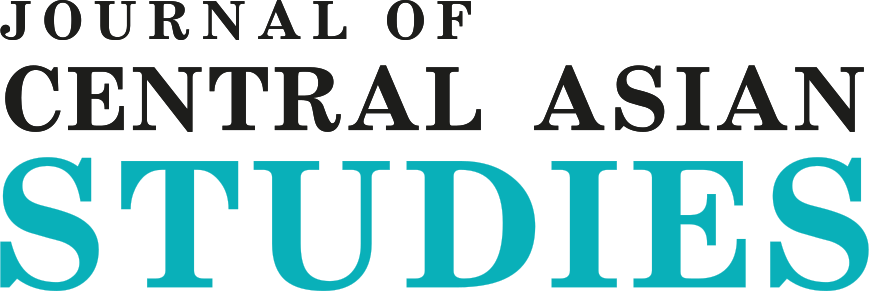India's Soft Power Outreach Strategy: Cultivating Its Cultural Influence in Central Asia (The Case of Kazakhstan)
DOI:
https://doi.org/10.52536/2788-5909.2023-1.05Keywords:
soft power, India's soft power outreach strategy, smart power, cultural diplomacy, non-residential Indian influenceAbstract
This article stresses on India's Soft Power Outreach Strategy (SPOS) as a comprehensive plan that aims to increase its presence in the global arena and reinforce its position as a powerhouse country. SPOS focuses on enhancing the people-to-people connect through the tools like public diplomacy, cultural activities, educational and research collaborations, scholarships, tourism, developmental projects and so on. The article studies implementation of SPOS in Central Asia and attempts to bring about usefulness and effectiveness of soft power diplomacy in the context of Kazakhstan.
References
David M. Malone, 2011. Does the Elephant Dance? Contemporary Indian Foreign Policy. Oxford University Press, pp. 23 – 24.
Shashi Tharoor, 2012. Pax Indica. India and the World of the 21st Century. Penguin Books, pp. 194-218
Kishan S . Rana, 2011. 21st Century Diplomacy. A Practicioner’s Guide. Key Studies in Diplomacy. The Continuum International Publishing Group, pp. 75-110
Oliver Stuenkel, 2016. Post Western World, How Emerging Powers are Remarking Global Order. Polity Press, Cambridge, pp. 97-1095.
Anjali Sahay, 2009. Indian Diaspora in the United States. Brain Drain or Gain? Lexington books, pp. 217-226
Nye, J. S., 1990. Soft Power. Foreign Policy, Issue 80, pp. 153-171.
P. Stobdan, “Asia’s Buddhist Connectivity and India’s Role .” Institute for Defence Studies and Analysis, February 19, 2016
P .Stobdan, “The Traces of Buddhism in the Semirech’e”, Himalayan and Central Asian Studies, Vol.7, No.2, April-June 2003, pp.3-24
Nye, J . S ., 2004. Soft Power: the means to success in world politics. New York: Public Affairs
P . Stobdan, India and Kazakhstan. Civilizational Explorations, New Delhi, Heritage Publishers, 2003 .
Nye, J . S ., 2008. Public Diplomacy and Soft Power. The ANNALS of the American Academy for Political and Social Science, Issue 616, pp. 94-109.
The Routledge Handbook of Soft Power, Edited By Naren Chitty, Li Ji, Gary Rawnsley, Craig Hayden, 2020
Cooper, R ., 2004. Hard Power, Soft Power and the Goals of Diplomacy. In: D . Held & M. Koenig-Archibugi, eds. American Power in the 21st Century. Cambridge: Polity Press, pp. 167-180.
Gallarotti, G ., 2011 . Soft Power: what it is, it’s importance, and the conditions for its effective use. Journal of Political Power, 4(1), pp. 25-47.
Nossel, S., 2004. Smart Power. Foreign Affairs, 83(2), pp. 131-142.
Radha Raina, 2010. Echoes of a Distant Past. India and Kazakhstan. Pp.64-89
Smith-Windsor, B. A., 2000. Hard Power, Soft Power reconsidered. Canadian Military Journal, 1(3), pp. 51-56.
Wagner, C ., 2005. From Hard Power to Soft Power? Heidelberg Papers in South Asian and Comparative Politics, Issue 26 .
Wilson, E . J ., 2008. Hard Power, Soft Power, Smart Power. ANNALS of the American Academy of Political and Social Sciences, Issue 616, pp. 110-124.
‘Historical Sites Recall When Kazakhstan Was Buddhist’ by Michelle Witte in Astana Times, 9 February 2015
PM Modi’s speech at community reception in Copenhagen, Denmark on 3 May 2022, [Electronic Resource]. URL: https://www.narendramodi.in/visit/denmark_speeches. (Accessed: 26 .12 .2022)
Anindita N. Balslev. 2022. On World Religions. Diversity, not Dissension. [Electronic Resource]. pp.5-17 URL: https://www.iccr.gov.in/sites/default/files/2023-01/9789351501749_Web.pdf. (Accessed: 20.12.2022)
Annual Reports of Indian Council for Cultural Relations. [Electronic Source]. URL: https://www.iccr.gov.in/annual-reports. (Accessed: 13.12.2022)
Saken Esirkep. 2020. ‘Zhumsak kush sayasaty: ulttyk kauipsizdik pen mumkindikter’ [Electronic Source]. URL: https://strategy2050.kz/news/zh-msa-k-sh-sayasaty-ltty-auipsizdik-pen-m-mkindikter-/ (Accessed: 02.12.2022)
Downloads
Published
Issue
Section
License
Copyright (c) 2023 Kakimzhanov A., Vedi S., Akhmedyanova D.

This work is licensed under a Creative Commons Attribution 4.0 International License.










 Open content is licensed under the CC-BY
Open content is licensed under the CC-BY 